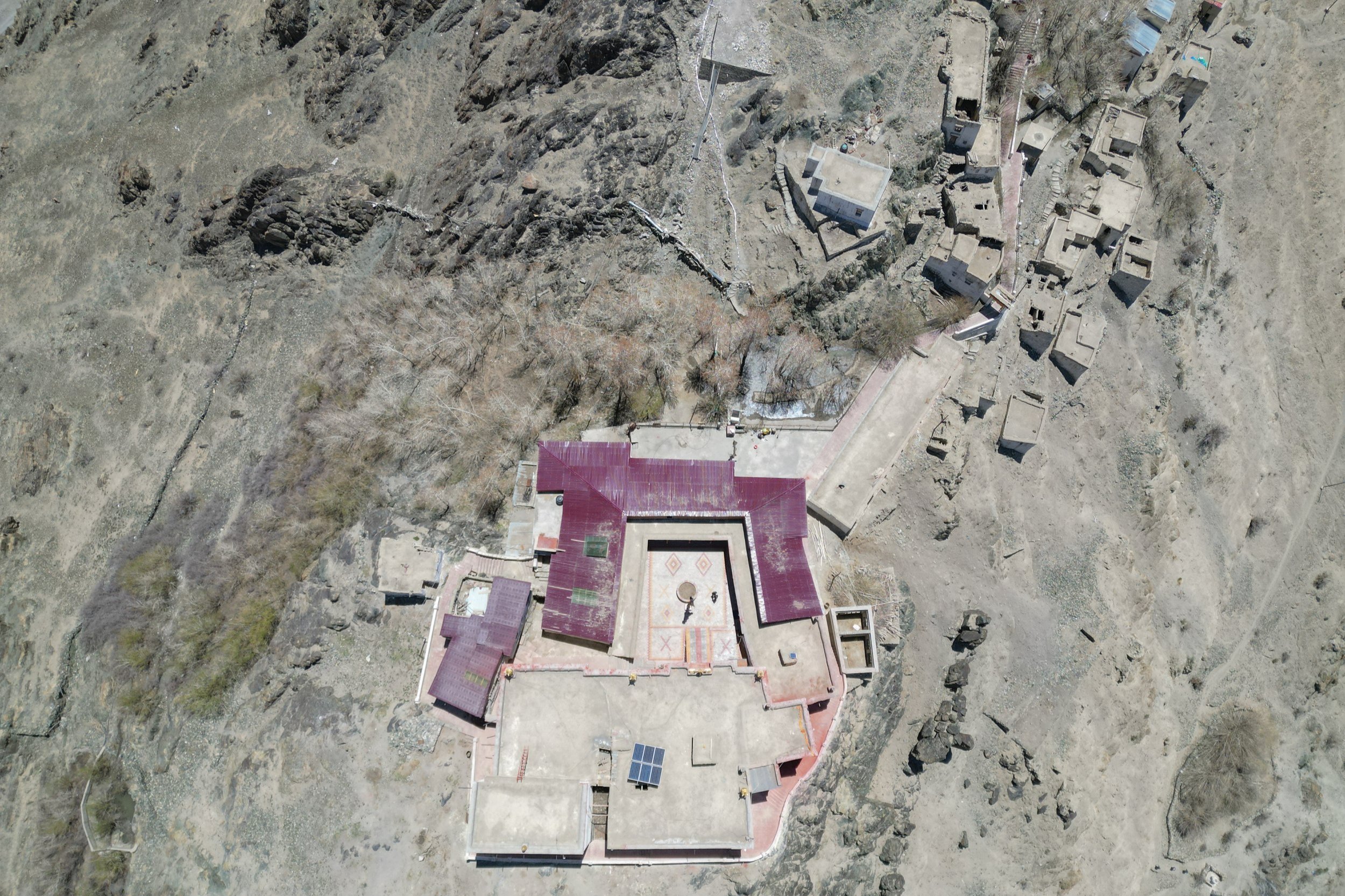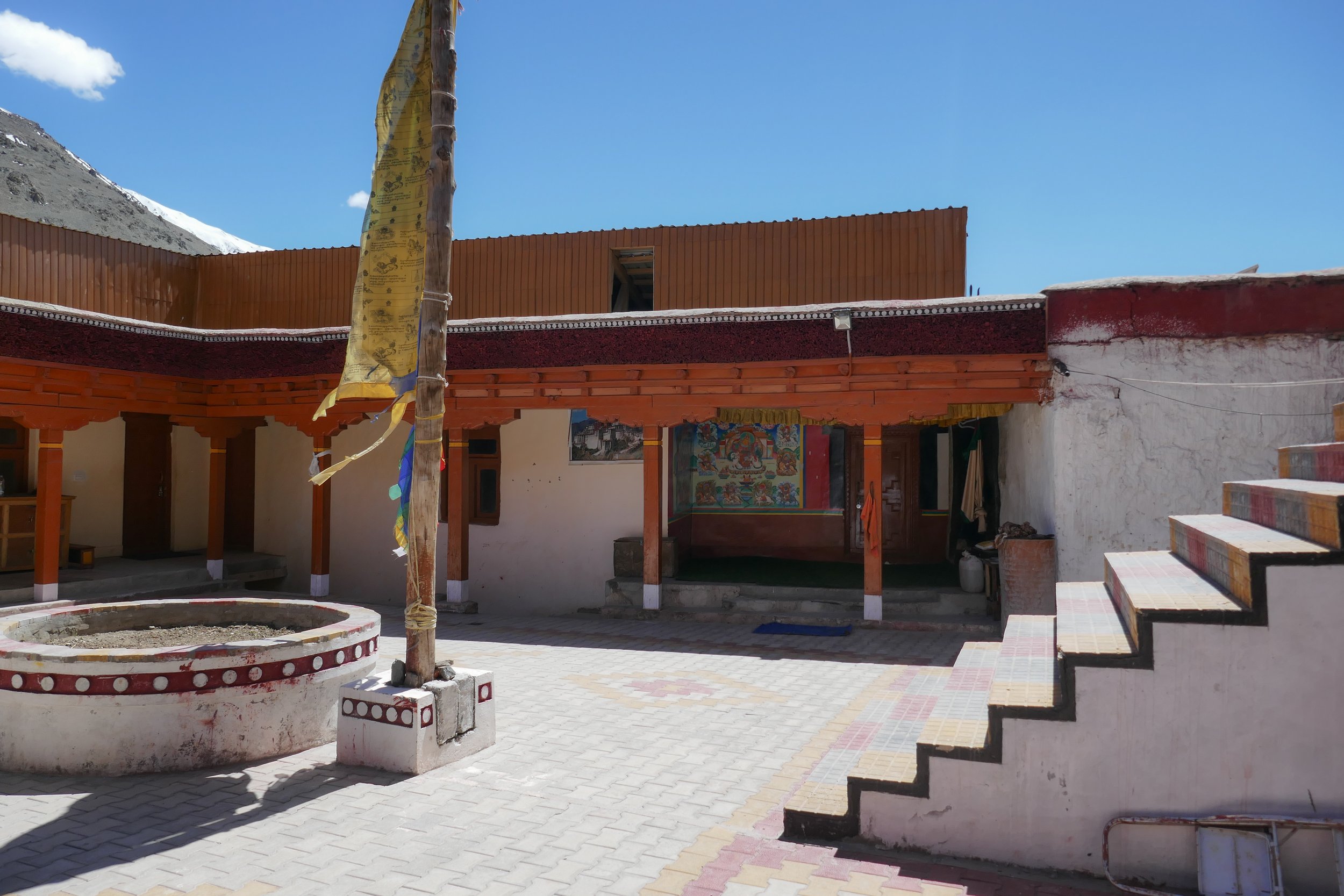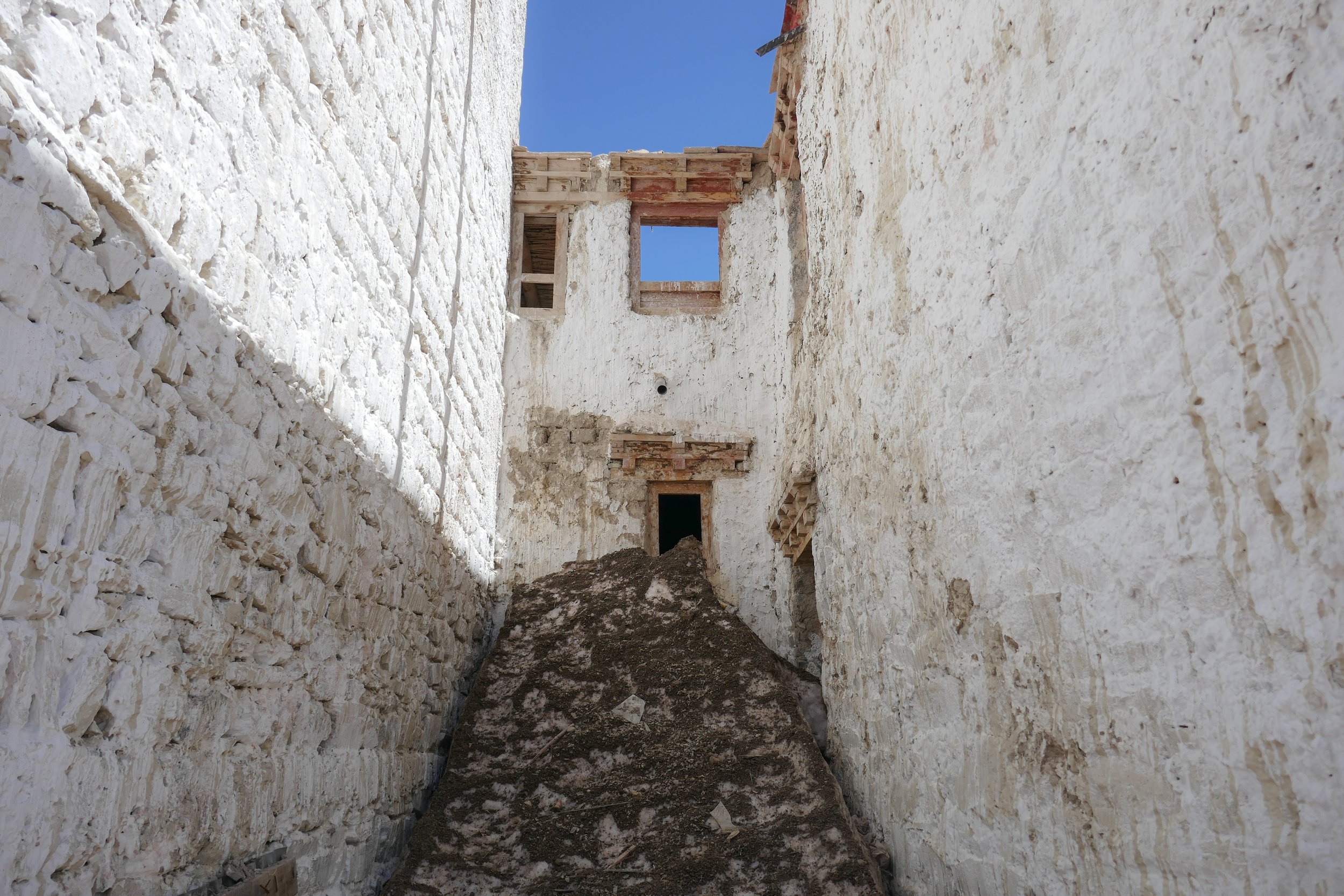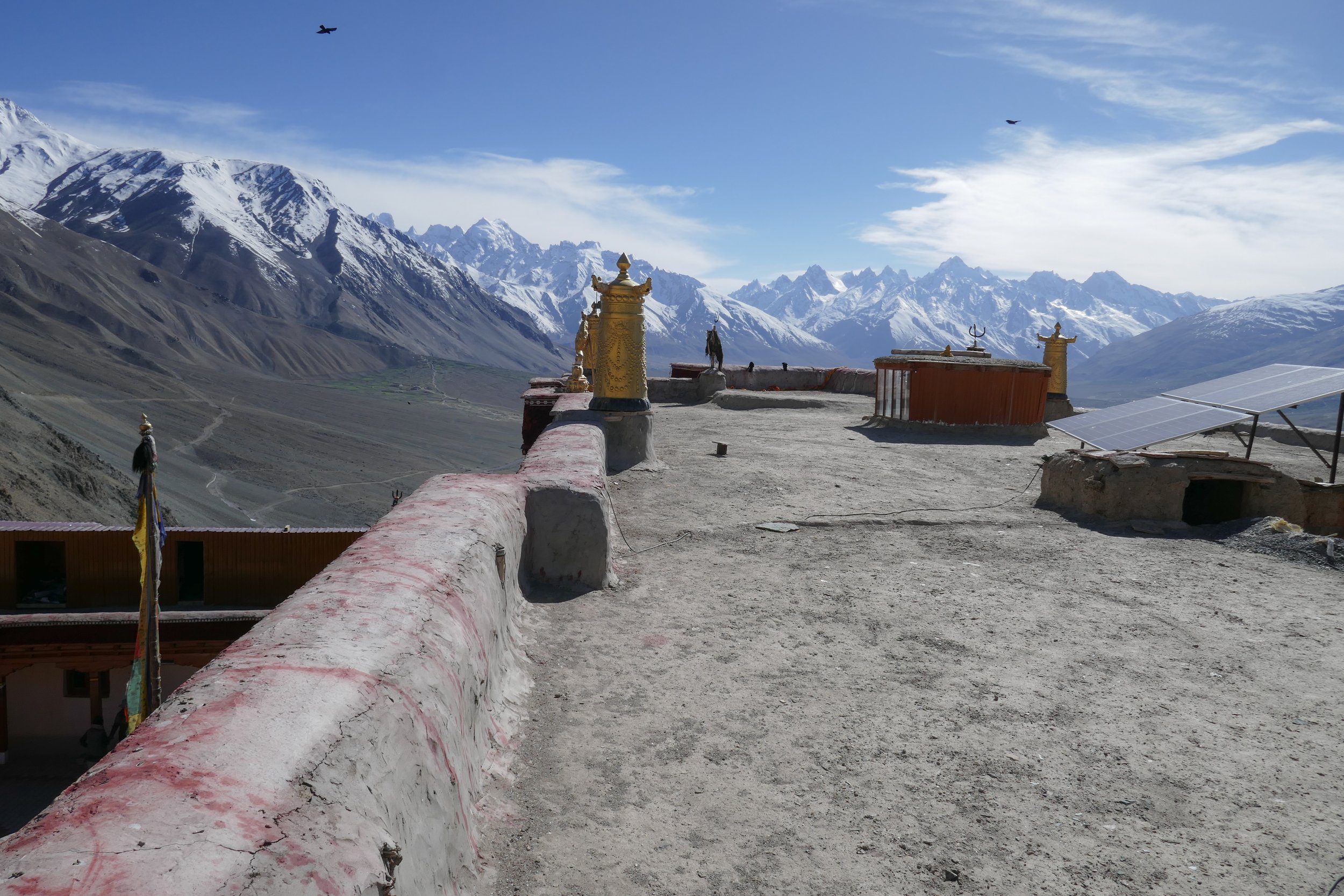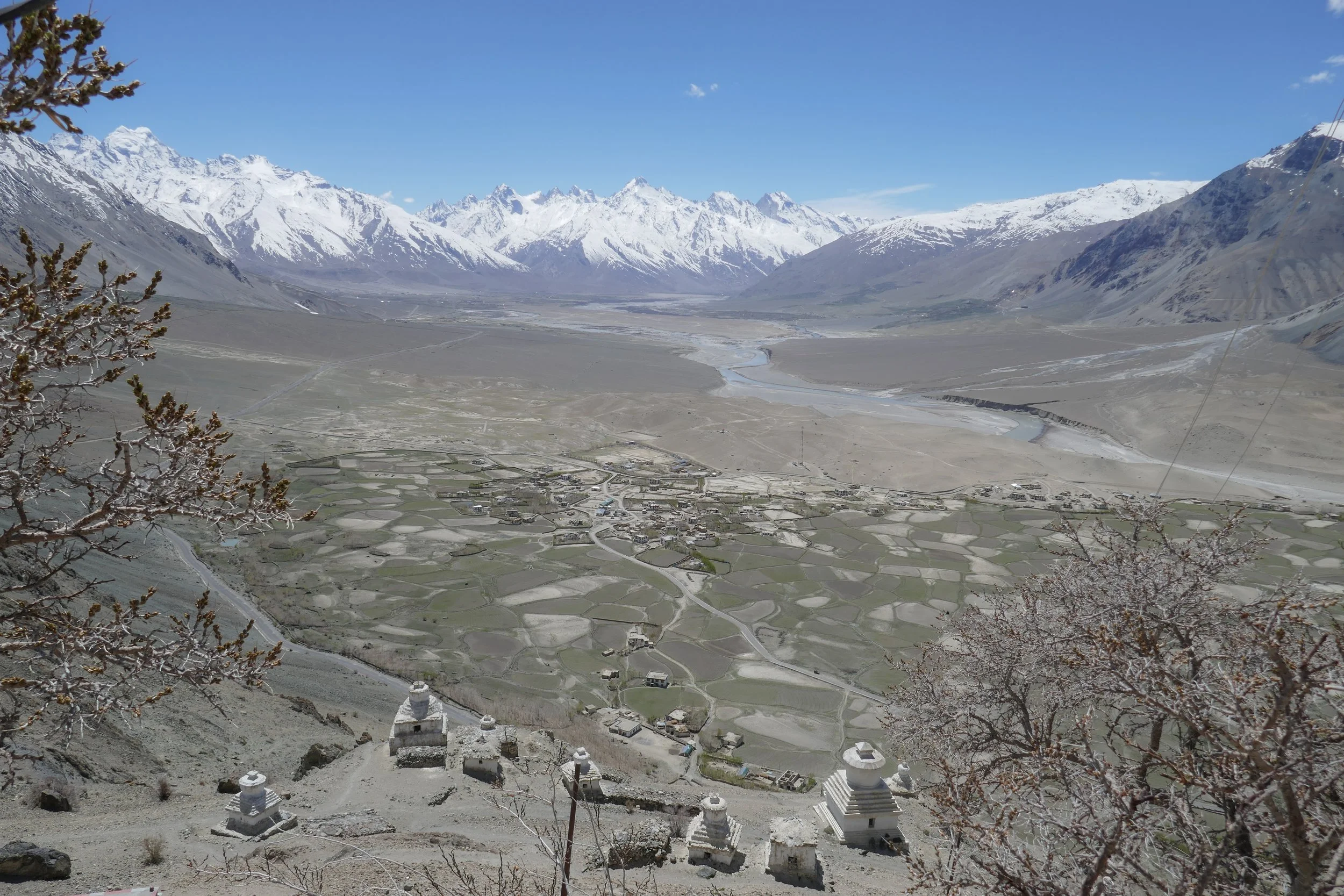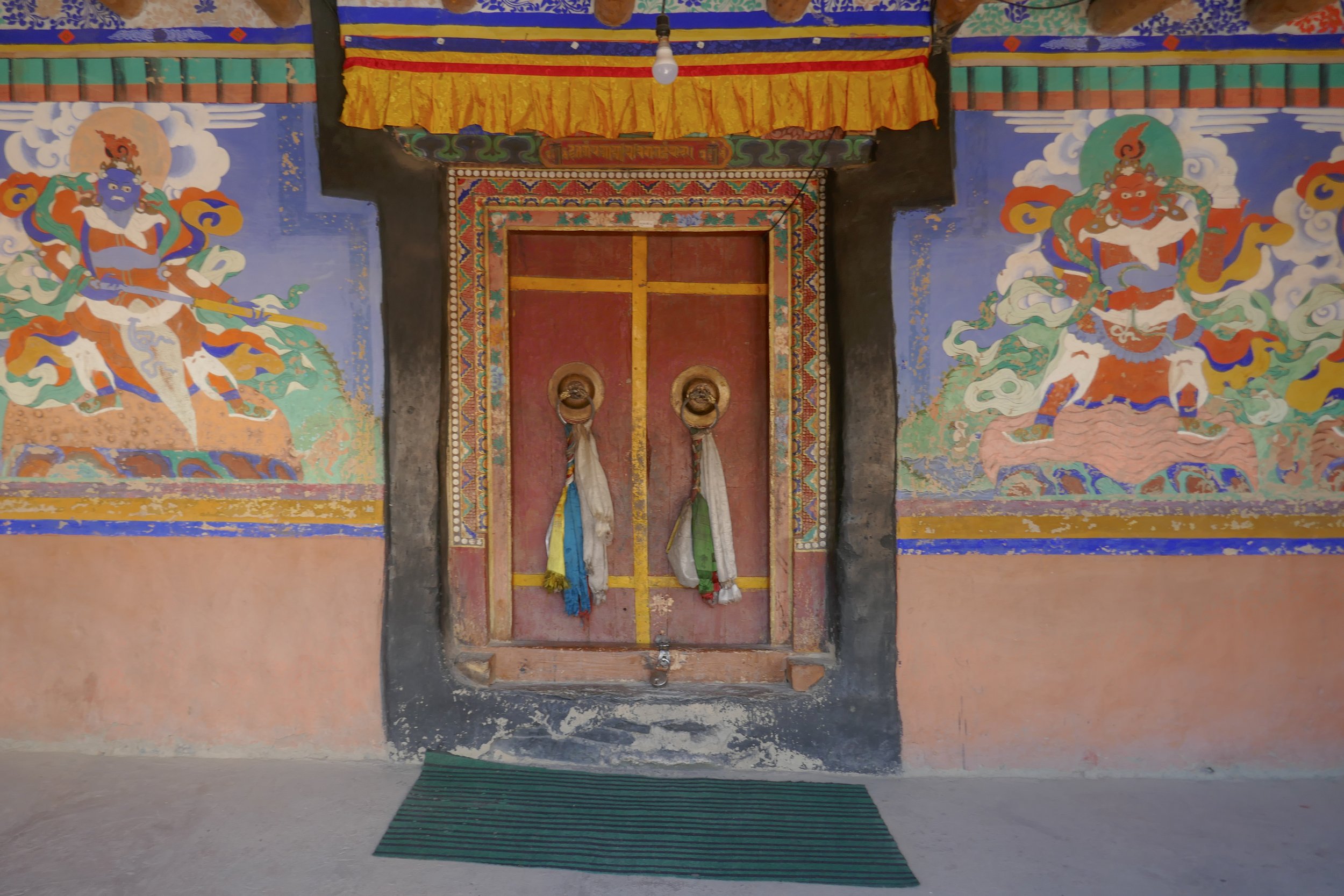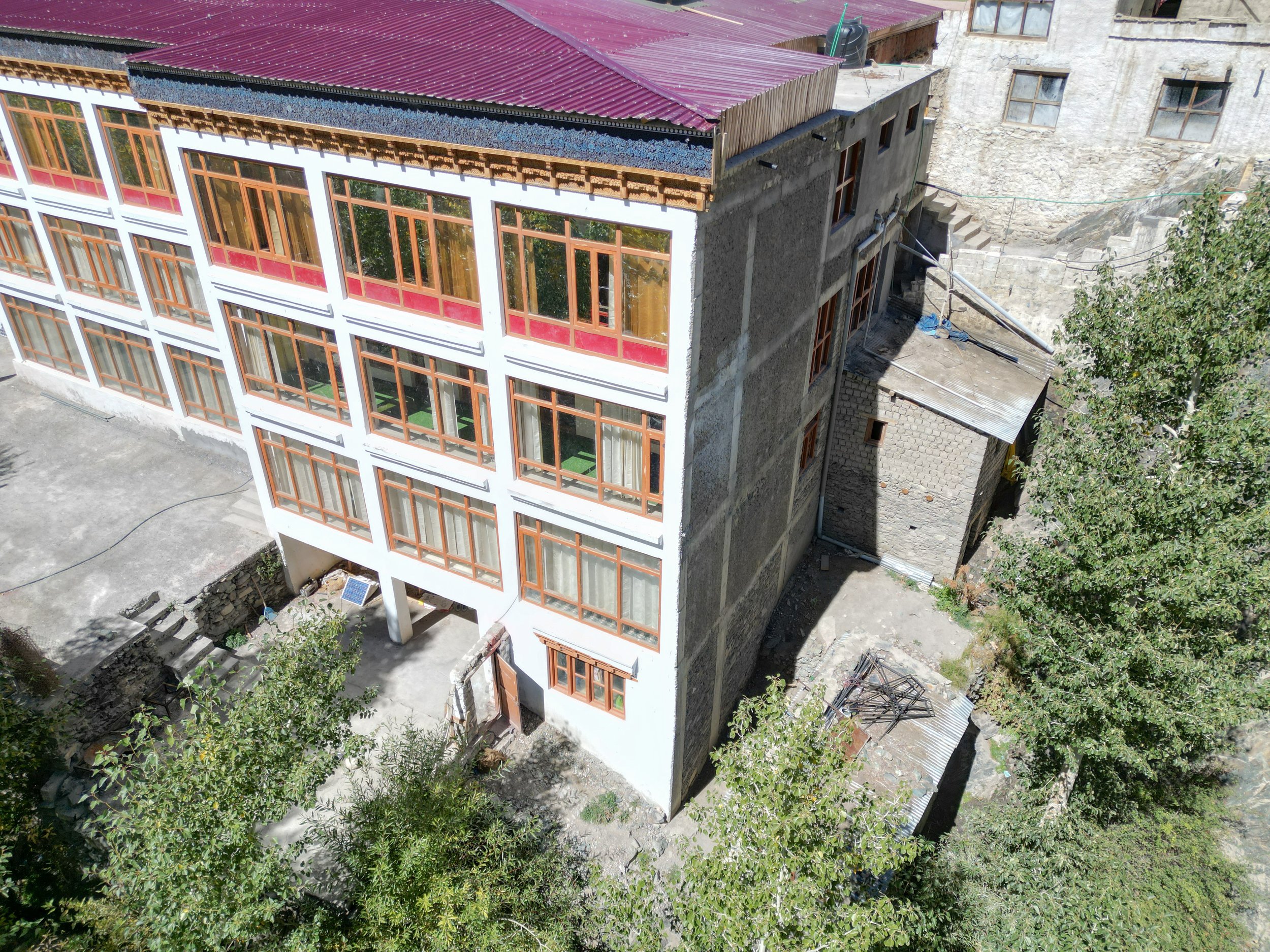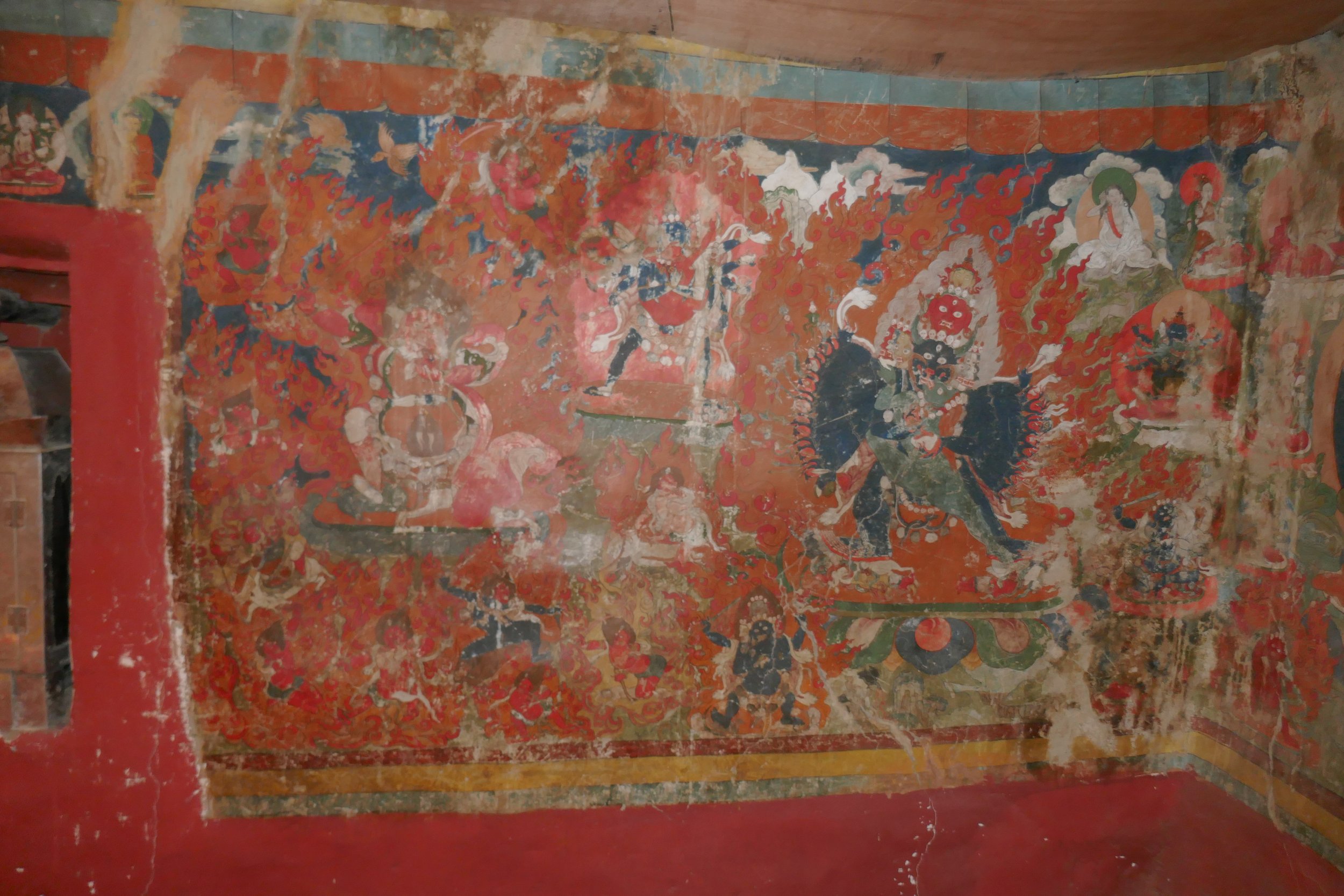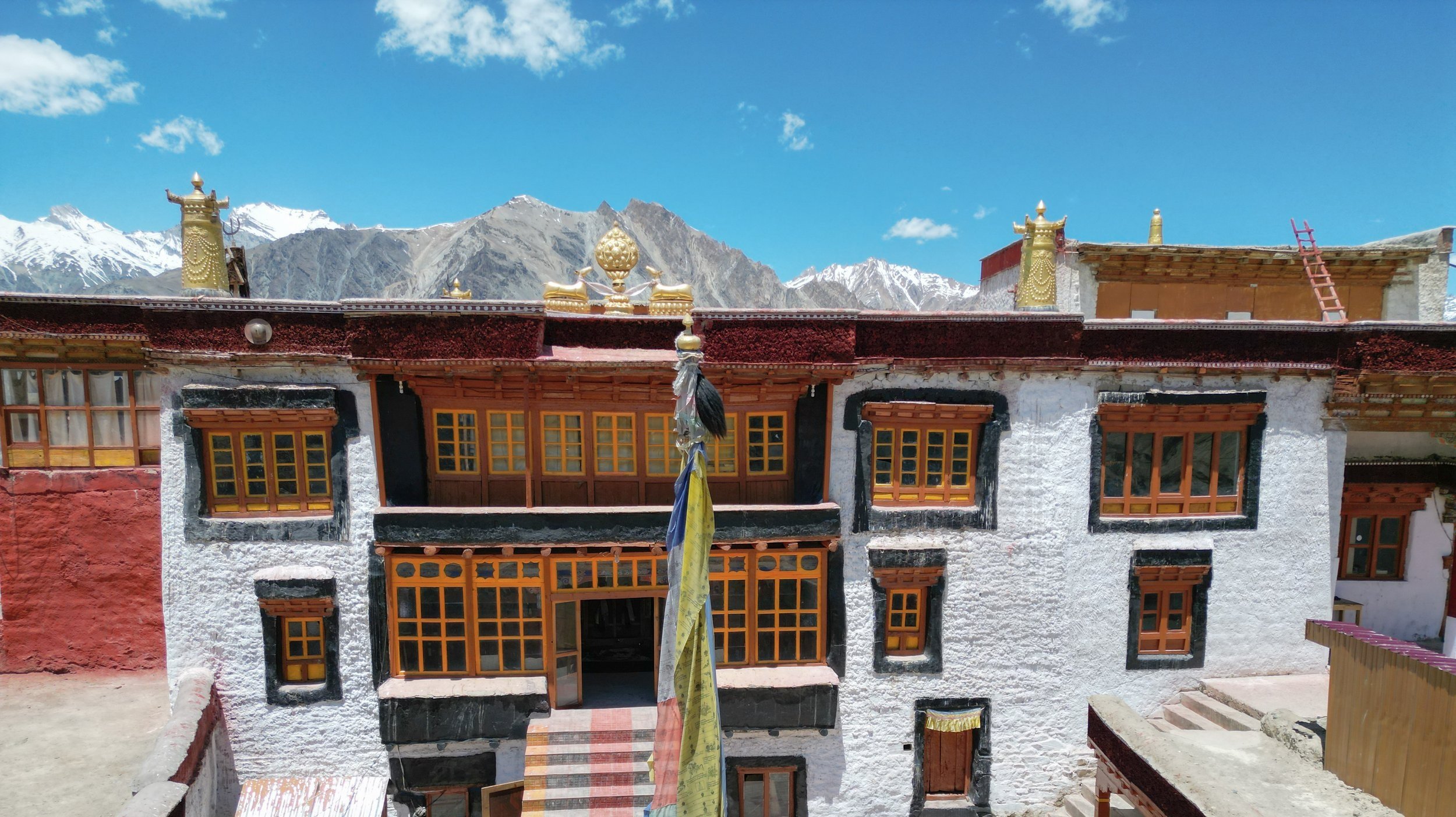
Stongdey Gonpa
Stongdey Monastery was founded by Marpa Lotsawa, a renowned translator from Tibet and Naropa’s disciple. It is said that during Marpa’s time, the 11th century, Stongdey village was fully submerged under water. When Marpa came by boat, he landed on a protruding rock ridge that is now the tall cliff where Stongdey Monastery sits. One chapel at Stongdey, Khudong Marpa Khang, is still dedicated to his legacy and contains a statue with his relics. Stongdey was originally of the Drukpa Kagyu, but Lama Gyatsen Lhundup Palzangpo converted it to the Gelugpa sect in the 15th century. Though it began as a fortified complex, with the temples themselves built after an enclosing wall, the wall was largely dismantled during the 18th-19th centuries as threats from social conflicts decreased. Its packed mud bricks were reused as new construction material. The current structure is the second largest Tibetan Buddhist Monastery in Zanskar and consists primarily of a courtyard through which most of the temples and communal spaces are accessible, as well as of monks’ quarters built along the courtyard’s perimeter, surrounded by patches of tree gardens. The various tree types are used for the thin stick slats and thicker or the truck beams of the Monastery’s ceilings. Stongdey Monastery is also known for its petroglyphs, including a semi-circle of six ancient stone carvings, a boulder carving near the road approaching the monastery, and what is said to be a naturally occurring manifestation of a Dakini. Another naturally occurring manifestation of another Dakini is located under the entrance door of Stongdey’s Dukhang Yokma. This Dukhang and its inner Gonkhang are the Monastery’s oldest structures. The newer constructions include Dukhang Kongma and the Monastery’s new guest house and kitchen.
